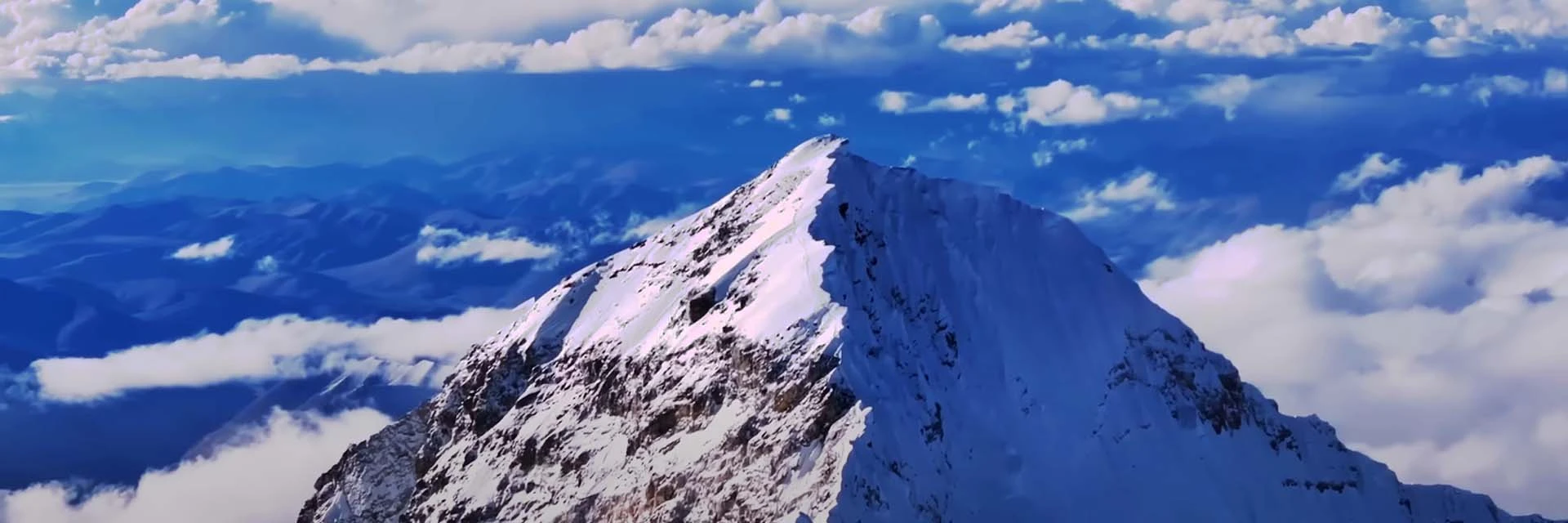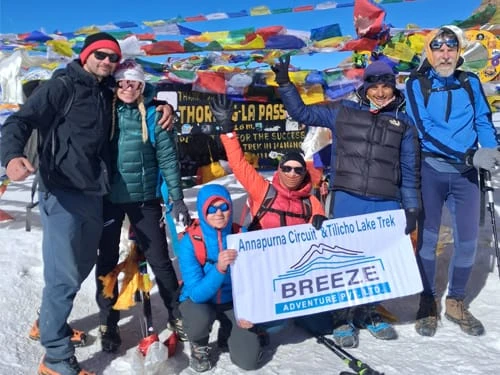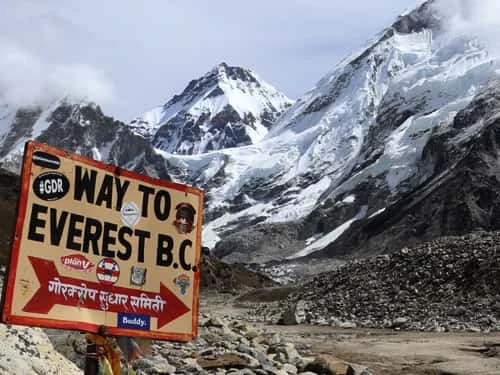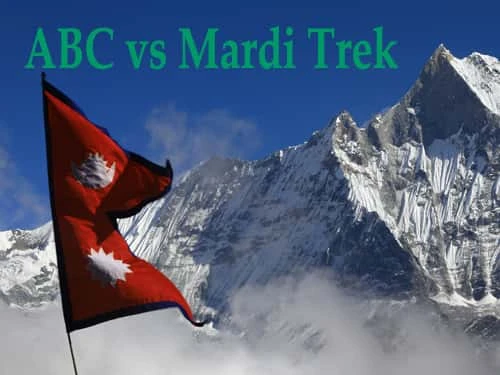The Historical Significance of Everest’s North Face
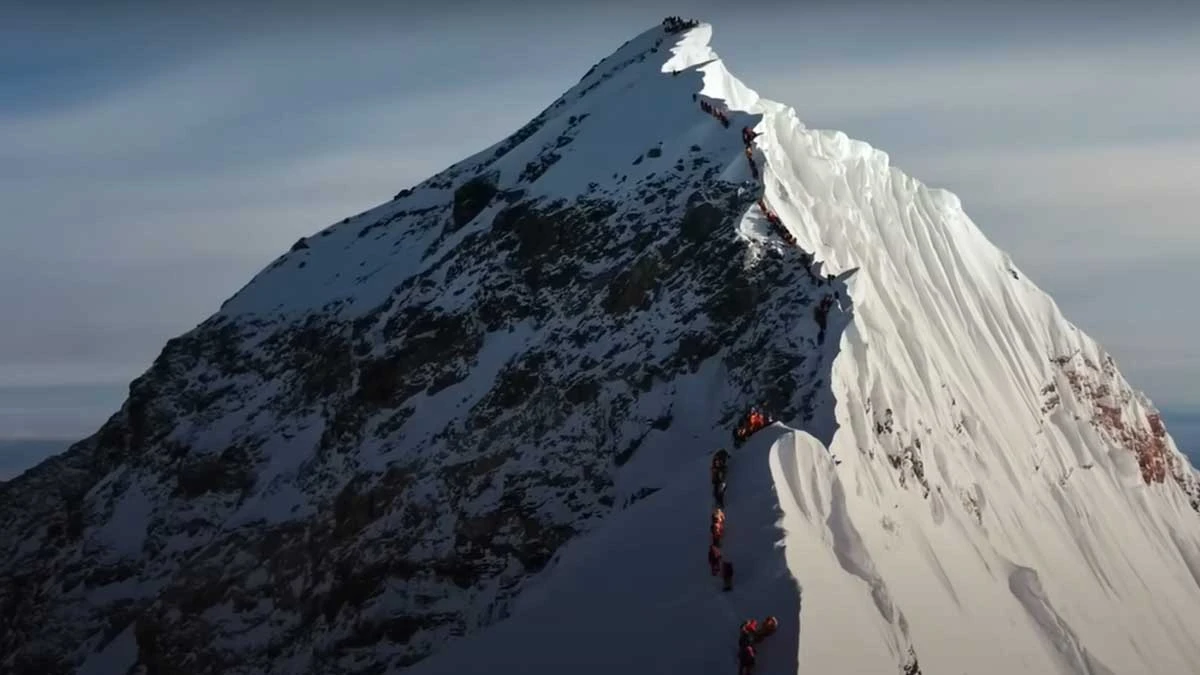
The north side of Everest has a deep connection to the past. Long before climbers set foot on the southern routes in Nepal, it was the Tibetan side that hosted the earliest expeditions. Yes, you heard that right. Even though the North Side is climbed less, it is the one that started first.
Early Reconnaissance (1921–1924)
- The British Reconnaissance Expedition of 1921 is the initial step of the expedition's history in Everest. It was led by Charles Howard-Bury. Similarly, it remained the first to map the northern approach to Everest.
- George Mallory, a key member of this expedition group, famously declared that Everest should be climbed “because it is there.” That’s how expedition came to mind.
- The team reached the North Col at 7,000 m, laying the foundation for future attempts.
- The 1922 and 1924 expeditions followed, with climbers attempting the Norton Couloir and the Northeast Ridge. It was during the 1924 attempt that Mallory and Andrew “Sandy” Irvine disappeared near the summit. This sparked one of the greatest mountaineering mysteries in history.
First Successful Ascent from the North Side (1960)
While Edmund Hillary and Tenzing Norgay first summited Everest from the south in 1953, the north side remained unconquered until 1960. In 1960, a Chinese team claimed the first ascent via the Northeast Ridge, marking a historic moment on the north side.
Later Notable Ascents
- Reinhold Messner & Peter Habeler (1978): In 1978, Reinhold Messner and Peter Habeler made history by becoming the first climbers to reach the summit of Mount Everest via the North Ridge without using supplemental oxygen. This was the groundbreaking achievement which proved humans survival in such challenging condition.
- Messner’s Solo Climb (1980): In 1980, Reinhold Messner achieved another legendary feat. This time he completed the first solo ascent of Mount Everest without supplemental oxygen. Climbing alone through the dangerous and challenging terrain, his climb proved extraordinary human endurance and skill at extreme altitudes.
Well, the North Face has since become symbolic of raw adventure. Still, it is remote, forbidding, and less commercialized than the South.
Geography and Terrain of the North Face
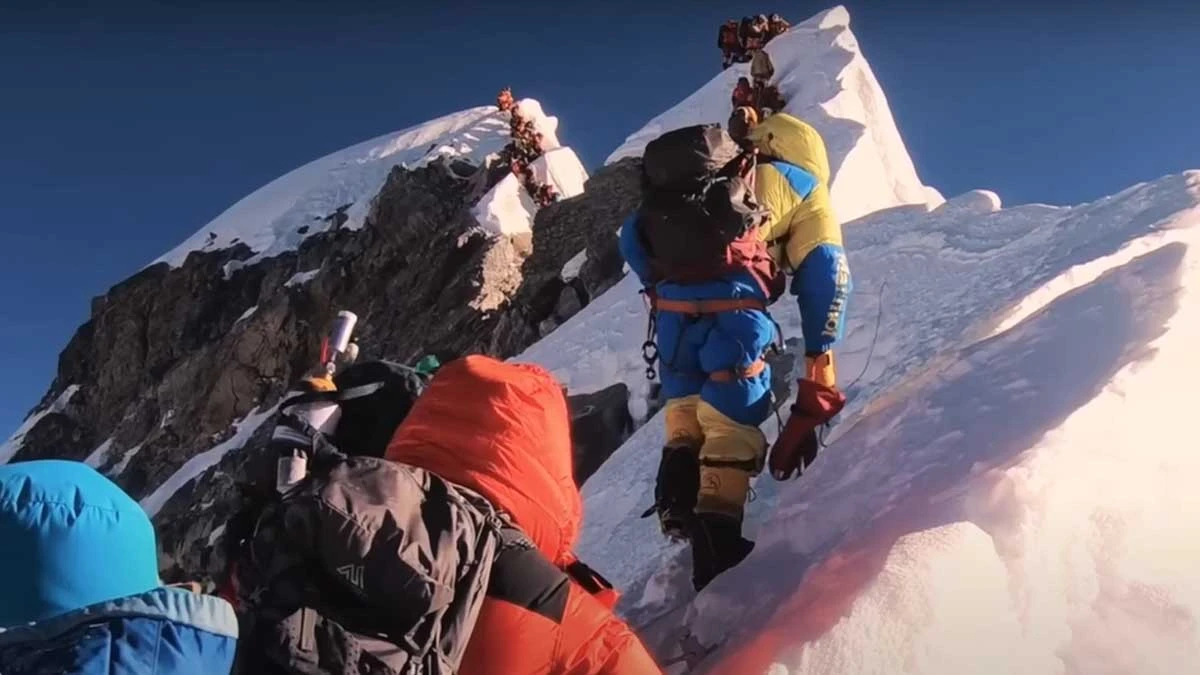
Unlike the green trails of Nepal’s south side, the North Face is rugged, dry, and exposed. Situated in Tibet’s remote Tingri County, the region lies on the Tibetan Plateau, which is often referred to as the "Roof of the World." The route follows the East Rongbuk Glacier before reaching the famous North Col at around 7,020 m. From here, climbers must tackle the Northeast Ridge and the notorious Three Steps.
North Col (7,020 m): First accessed during the 1921 British Reconnaissance Expedition, it became the staging point for many subsequent climbs.
Three Steps: The first (~8,564 m), second (~8,610 m), and third (~8,710 m) steps are rock formations that demand technical climbing skills. The Second Step, in particular, is one of the hardest parts of Everest and is equipped with a ladder installed in 1975.
The North Face of Everest lies within the Tibet Autonomous Region, China. This is accessible via Lhasa and the road to Rongbuk Monastery.
Key Features of the Terrain
- Rongbuk Valley & Monastery (4,980 m): This is the world’s highest monastery. It serves as a spiritual and cultural gateway to Everest’s north.
- North Base Camp (5,200 m): Unlike the south base camp in Nepal, the north base camp is accessible by road. You don’t have to went through several days of trekking. This makes it logistically easier to reach.
- East Rongbuk Glacier: This glacier is a defining feature of the north face. It literally flows down from Everest’s flanks.
- High Camps: Climbers establish camps at 6,500 m (Advanced Base Camp), 7,000 m, 7,700 m, 8,300 m, and finally the summit push.
The terrain is stark, rocky, and windblown compared to the lush approaches of the south. Similarly, the sheer cliffs of the Norton Couloir, Great Couloir, and Hornbein Couloir dominate the skyline. This obvioulsy intimidate even seasoned climbers.
Interesting Facts About the North Face
- The 1924 Mallory & Irvine expedition vanished on this route, creating one of mountaineering’s greatest mysteries.
- Reinhold Messner made the first solo ascent of Everest in 1980 from the north side without supplemental oxygen.
- The North Face is sometimes called the “Climber’s Everest” because of its technical challenges compared to the south.
- The Second Step (8,610 m) is one of the hardest parts of the climb. A metal ladder installed by a Chinese team in 1975 is still used by climbers today.
- The North Col (7,020 m) was the first major pass discovered on Everest in 1921 during the British reconnaissance expedition.
- The North Face offers the highest drivable base camp in the world (5,200 m), unlike the South which requires a trek from Lukla.
- The North Face is more exposed to strong winds due to the Tibetan Plateau’s geography, making weather conditions more unpredictable.
- Tibetan culture and spirituality are deeply tied to the region—many climbers receive blessings at Rongbuk Monastery, the world’s highest monastery.
- Before Nepal opened its borders to foreign climbers in the 1950s, all early Everest expeditions (1921–1938) attempted the mountain via the North Face.
- Despite being technically difficult, the North Face route is sometimes cheaper to climb because of road access to base camp, reducing logistics costs.
Climbing Routes of the North Face

The north side is renowned for being technically harder and riskier than the south. Its major routes have challenged the best climbers in history.
Northeast Ridge Route
- This is the standard climbing route on the north side.
- Climbers ascend from North Base Camp → Advanced Base Camp → North Col → Camp II → Camp III → Camp IV (at ~8,300 m) → Summit.
- Challenges: “Three Steps” - Three near-vertical rock faces at extreme altitude is a major challenge in this route. Similarly, the infamous Second Step (8,610 m) is also another technical challenge. This was historically climbed with a ladder.
Norton Couloir
- This route was first attempted by Edward Norton in 1924. He reached 8,572 m without oxygen. This remained a record for decades.
- It is also a direct, steep route which needs just passing the Three Steps. But this is technically demanding, so requires a good mountaineering skills.
Hornbein Couloir
- This route is extremely steep and narrow, so associated with high risk.
- It is also a part of the legendary 1963 West Ridge traverse by Tom Hornbein and Willi Unsoeld. These days, it is rarely attempted.
Comparison of Climbing Routes of the North Face
| Route | Difficulty | Key Challenges | Popularity |
| Northeast Ridge | High | The Three Steps: exposure, winds | Most common route |
| Norton Couloir | Very High | Steep incline, technical terrain | Rarely used |
| Hornbein Couloir | Extreme | Sheer ice/rock, avalanches | Elite climbers |
Challenges and Hazards of the North Face(Mt Everest)
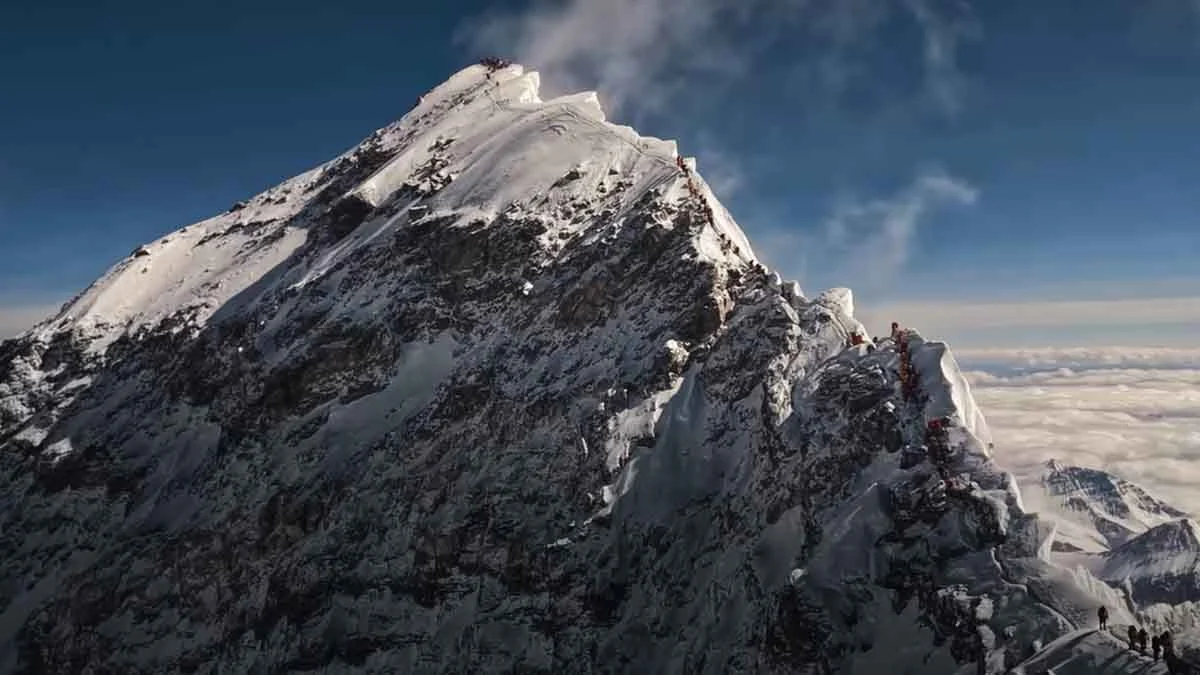
The north side is often described as colder, windier, and more dangerous than the south. It is associated with the following major challenges, check out:
- Weather: The Tibetan Plateau funnels fierce winds. So, temperatures can plunge below -40°C.
- Altitude: With camps set at higher altitudes, climbers face longer exposure in the “death zone.”
- Technical Risks: Steep ice walls, rock falls, and the notorious Three Steps test climbers’ limits. You really need to have a good mountaineering skill for this.
- Logistics: Oxygen resupply and rescue operations are more difficult in North Side when compared to Nepal.
Because of these factors, many climbers consider the North Face technically harder despite its road-accessible base camp.
Trekking the North Face: An Alternative to Climbing
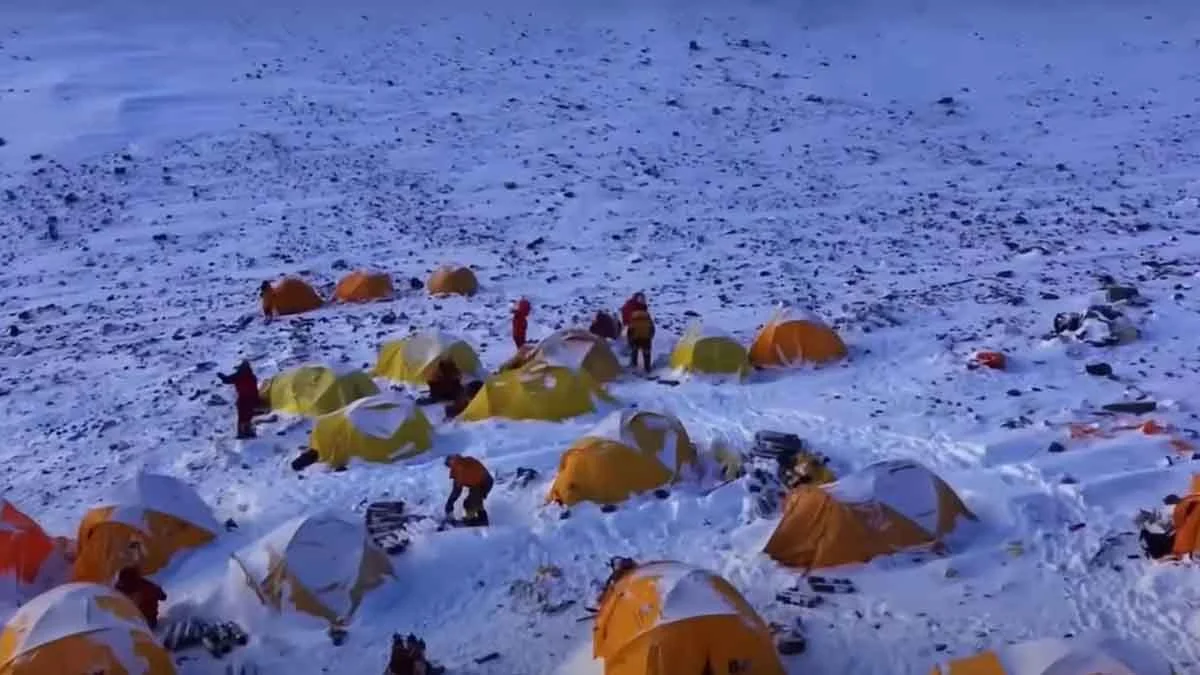
Not everyone dreams of summiting Everest. For many, experiencing the majesty of the North Face up close through trekking is a once-in-a-lifetime adventure.
North Everest Base Camp Trek
One of the most rewarding ways to see the mountain is through the North Everest Base Camp Trek. This trek takes you directly to the north base camp at 5,200 m. Interestingly, this offers sweeping views of Everest’s mighty wall.
- Duration: About 10–14 days from Lhasa.
- Highlights: Lhasa’s Potala Palace, Tibetan landscapes, Rongbuk Monastery, panoramic views of Everest.
- Difficulty: Moderate, suitable for trekkers with good fitness.
- Best Season: April–May and September–October.
Hence, this trek allows adventurers to experience Everest’s North Face without extreme climbing risks. This is ideal for travelers seeking cultural immersion and high-altitude adventure.
Planning Your Journey to the North Face
The best planning is always the strongest initial move for any journey, and it’s mandatory for an adventure trek. With good planning, you will reduce any possible risks that come across the way. Here’s the right planning strategy:
Best Time to Visit the North Face
- Spring (April–May): Clear skies, stable weather, prime trekking and climbing.
- Autumn (September–October): Post-monsoon clarity, fewer crowds.
- Winter: Harsh, bitterly cold-not recommended.
Permits and Regulations for the North Face
- Chinese visa + Tibet Travel Permit required.
- For trekkers: organized tours are mandatory.
- For climbers: special mountaineering permits issued by the China Tibet Mountaineering Association (CTMA).
Preparation for the North Face
- Acclimatization is critical.
- Cardiovascular and endurance training is recommended months in advance.
- Essential gear: cold-weather clothing, trekking poles, altitude medication, and for climbers-ropes, crampons, and oxygen support.
Cultural and Environmental Aspects
Tibet is a land of surprising culture and deeply rooted traditions. There are many things to explore which still reflect ancient life and history.
Tibetan Culture
The north face journey is not just about mountains, it’s a cultural odyssey. You’ll encounter:
- Rongbuk Monastery: The world’s highest monastery, offering a spiritual perspective of Everest.
- Prayer flags & Mani walls: Marking the trail with blessings for safe journeys.
- Local Tibetan hospitality: Insight into nomadic life and Buddhist traditions.
Environmental Concerns
Both the north and south faces of Everest have suffered from waste issues. Responsible tourism is vital:
- Follow Leave No Trace principles.
- Support local clean-up initiatives.
- Travel with eco-conscious operators.
Comparing the North Face and South Face of Everest
Trekkers and climbers often wonder how the two sides differ. Here’s a quick comparison:
| Feature | North Face (Tibet) | South Face (Nepal) |
| Base Camp Altitude | 5200 m | 5364 m |
| Access | Road to Base Camp (jeep accessible) | Trek from Lukla (7–10 days) |
| Mian Route | Northeast Ridge via North Col | Southeast Ridge via South Col |
| Difficulty | Technical, windy, colder | Steeper, avalanche-prone |
| Permit | Requires CTMA permit + Tibet Travel Permit | Nepal Government climbing permit |
| Culture | Tibetan Buddhism, Rongbuk Monastery | Sherpa culture, Khumbu region |
| Rescue Options | Limited helicopter access | More reliable rescue services |
Most Popular FAQs about the North Face of Mount Everest
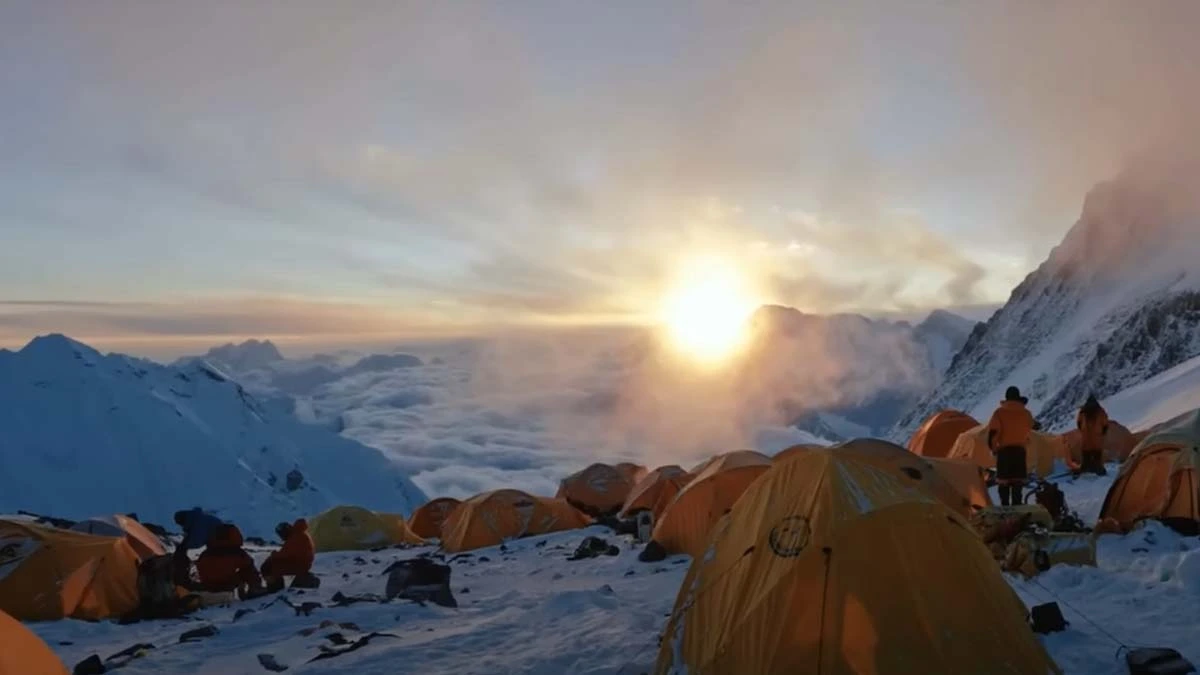
1. What is the elevation of the North Face of Mount Everest?
The North Face itself is part of Mount Everest’s towering wall that rises above the East Rongbuk Glacier. The North Base Camp is at 5,200 m (17,060 ft), while the summit of Everest remains at 8,848.86 m (29,031 ft).
2. How do you reach the North Face of Everest?
To reach the north side, you must travel into Tibet (China). Most visitors fly into Lhasa and then drive overland through Shigatse and Tingri before reaching Rongbuk Valley and the North Base Camp. Organized tours are required for foreigners.
3. Is the North Face harder than the South Face?
Yes. While both are challenging, the north side is considered colder, windier, and technically more difficult. Climbers face obstacles like the Three Steps at extreme altitude, making summiting from the north generally harder.
4. Can trekkers visit the North Face without climbing Everest?
Absolutely, the North Everest Base Camp Trek allows non-climbers to reach the base camp at 5,200 m, offering a close-up view of the North Face. It’s one of the best ways to experience Everest without the dangers of climbing.
5. What permits are required to visit the North Face?
Travelers need a Chinese visa, a Tibet Travel Permit, and, for climbers, a mountaineering permit issued by the China Tibet Mountaineering Association (CTMA). Trekkers must join an organized tour to legally access the region.
6. When is the best time to visit the North Face of Everest?
The best seasons are spring (April–May) and autumn (September–October). These windows offer clearer weather and safer travel conditions. Winters in Tibet are extremely harsh and not recommended.
7. What are the main climbing routes on the North Face?
The primary climbing routes are the Northeast Ridge, the Norton Couloir, and the Hornbein Couloir. The Northeast Ridge is the most commonly used, though all north-side routes are highly challenging and technical.
8. How long does the North Everest Base Camp Trek take?
Typically 10–14 days, depending on the itinerary. The journey often includes acclimatization in Lhasa and gradual travel through the Tibetan highlands before reaching Rongbuk Monastery and the base camp.
9. What makes the North Face culturally unique?
The north side offers a blend of Tibetan Buddhist culture, highlighted by Rongbuk Monastery, the world’s highest monastery. Pilgrims, prayer flags, and Mani walls add a spiritual dimension to the adventure.
10. Is altitude sickness a concern at North Base Camp?
Yes. At 5,200 m, the risk of altitude sickness is real, even for trekkers. Proper acclimatization, gradual ascent, hydration, and in some cases, preventive medication (like Diamox) are highly recommended.
11. What is the difference between North Everest Base Camp and South Base Camp?
North Base Camp (Tibet): (5,200 m), accessible by road, colder, and offers panoramic views of Everest’s sheer face.
South Base Camp (Nepal): (5,364 m), only accessible by trekking through the Khumbu Valley, greener landscape and closer cultural interactions with Sherpa communities.
See: North Face vs South Face of Mount Everest for a detailed comparison.
12. Can I drive to Everest’s North Base Camp?
Yes, unlike the south side in Nepal, which requires trekking, the North Base Camp in Tibet is reachable by road. Most visitors drive from Lhasa via Shigatse and Tingri, making it more accessible logistically but still physically demanding due to altitude.
The North Face of Mount Everest remains one of the most fascinating and formidable sides of the world’s tallest mountain. From its historic expeditions and treacherous climbing routes to the serene yet challenging treks to its base camp, the north side offers a unique perspective that few travelers experience.
